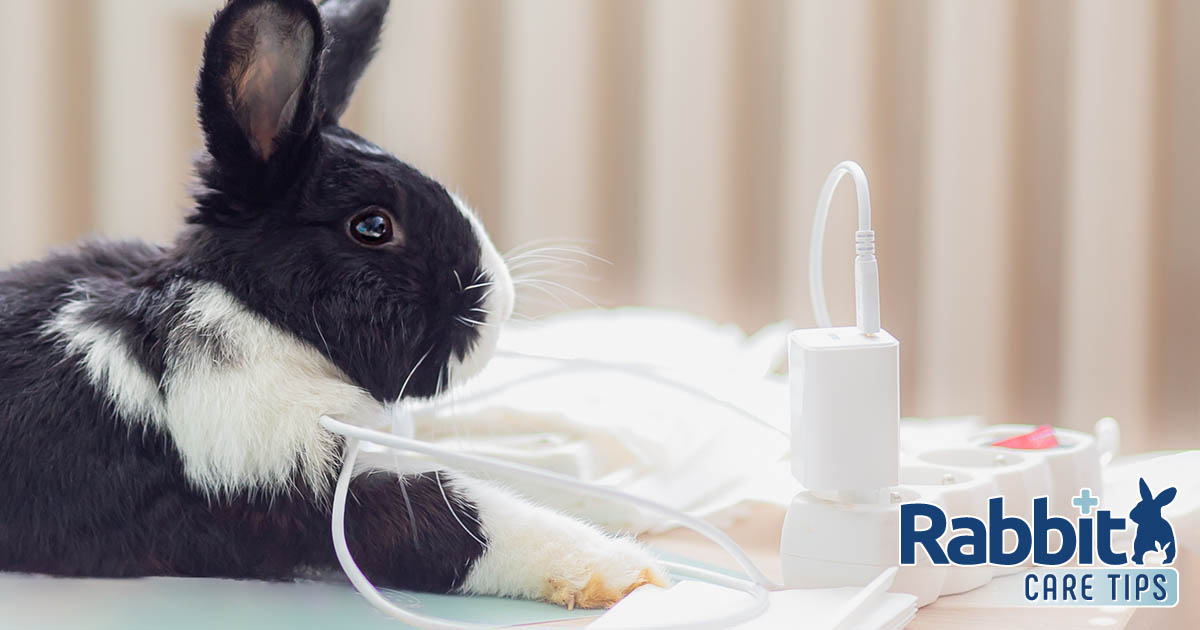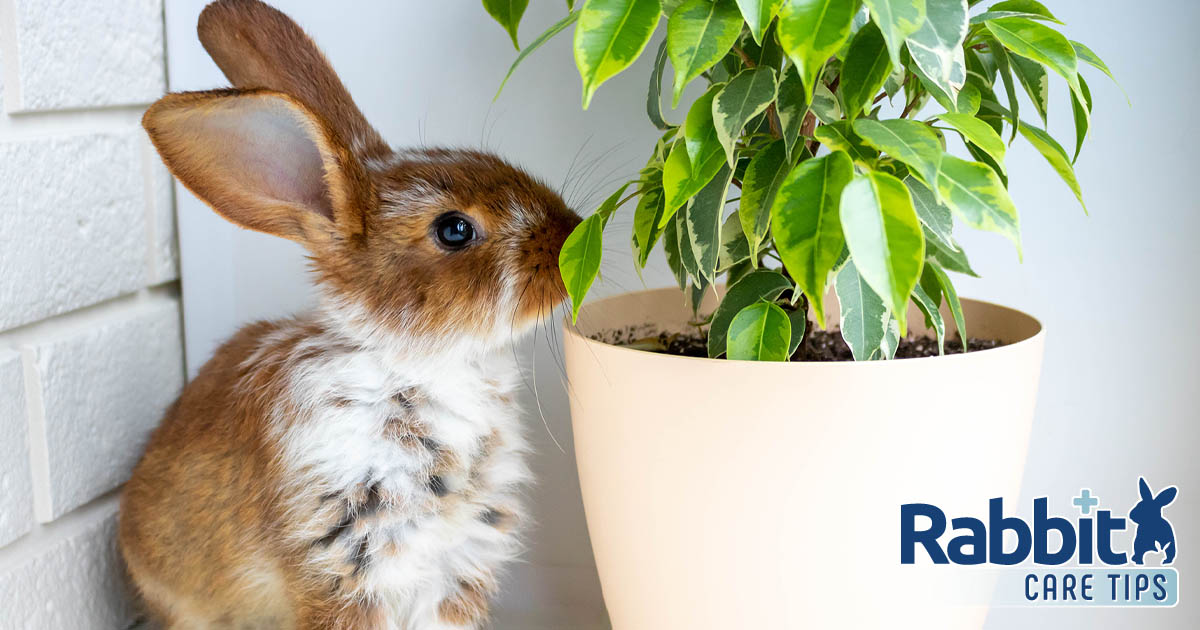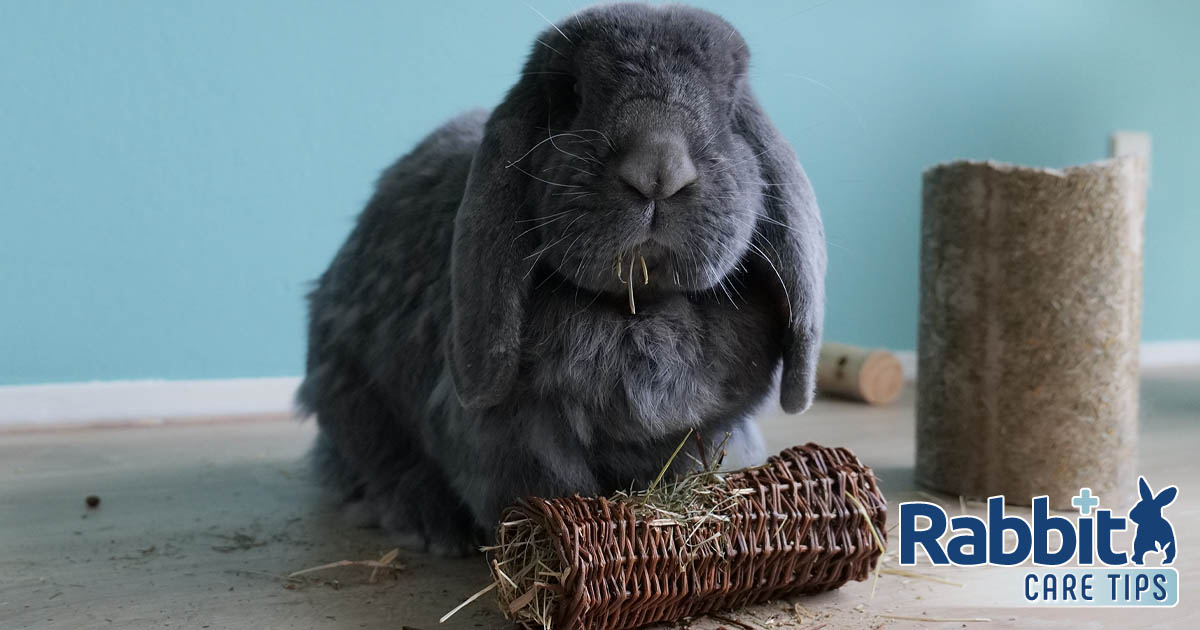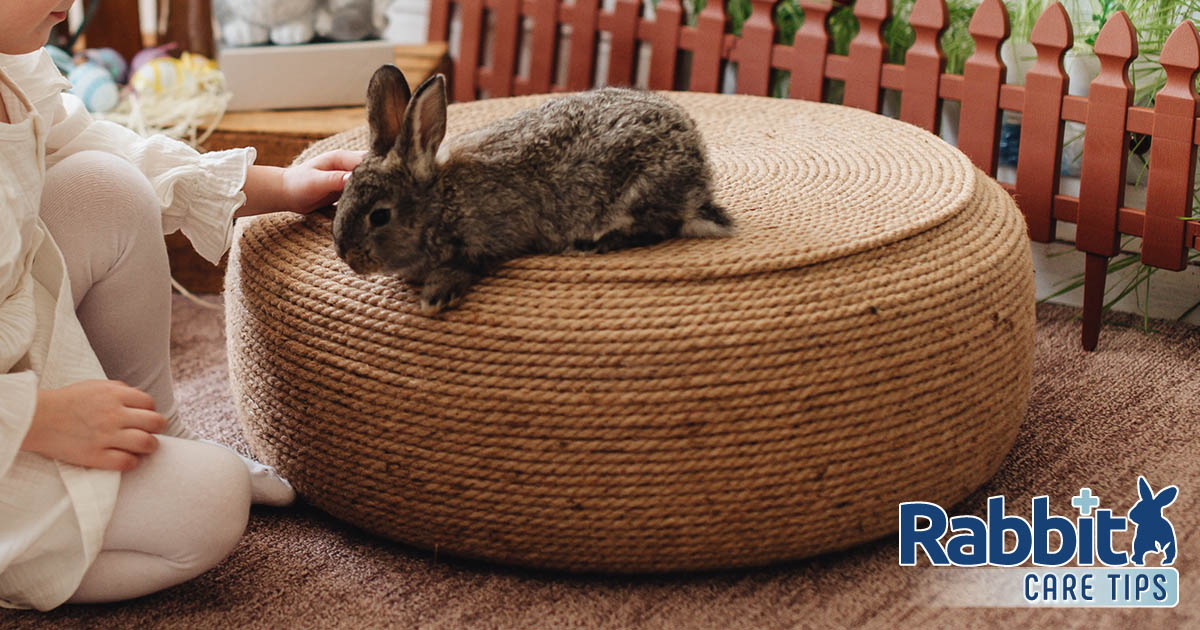Living with a house rabbit requires bunny-proofing your home. Doing so helps prevent damage to your property, safeguards your rabbit from danger, and provides plenty of safe and enjoyable chewing options for your rabbit too.
Some animal owners prefer to leave their rabbits outside in a hutch and then only bring them inside for monitored play to avoid rabbit-induced wear and tear on their homes, but what if you want to keep your bunny in the house with you?
The pleasure of having a house rabbit is well worth the work of safeguarding his well-being as well as your possessions. Knowing how to bunny-proof a space helps keep your rabbit safe while also protecting your home.
What Does It Mean to “Bunny-Proof” Your Home?
While your cute rabbit may appear harmless and sweet, their love of gnawing and digging may cause household ruin if left alone without the right precautions.
Bunny-proofing (rabbit-proofing) is a solution to keep your floppy-eared pal secure while also safeguarding your living space from its potentially damaging tendencies. While eating, burrowing, and digging are all-natural and healthy rabbit habits, ordinary household items like wires might be dangerous.
If you’ve recently adopted a rabbit, try wandering through your house and seeing things through the eyes of your four-legged pet. Get down on your hands and knees and have a look around to discover what kinds of dangerous or damaging behaviors your rabbit might be capable of.
You can prevent your rabbit from chewing on cables, digging into your carpet, and generally being a nuisance with a little planning and preparation.
The purpose of rabbit-proofing is to ensure that your rabbit is safe, save your valuables, and provide more beneficial ways for your rabbit to exercise their instincts. You’ll continue to have problems with your indoor rabbit unless you address all three of these issues.
How to Prevent Your Bunny From Nibbling on Your Electrical Cables
Rabbits have needle-sharp teeth. This is why the thin plastic insulation used in power wires provides no protection. While training your rabbit can help prevent them from biting on certain objects, it is exceedingly difficult to keep them from chewing on wires.
Your rabbit, which is naturally inquisitive and likes crawl spaces, will respond to the back of your TV or office desk in the very same way that a human will respond to a chocolate bar.
A rabbit’s life is jeopardized by electrical cables. Chewing on a cord can result in serious burns or even electrocution. Some other cables and wires that can be dangerous include phones, computers, stereos, cable TVs, and other electrical cords.

Bunny-Proofing Electrical Cords
- Spiral Cable Wrap: These cost approximately $5 for 10 feet and work well for most bunnies, but not all. (Some bunnies are still able to chew through it.)
Since this material is incredibly flexible, cables are still manageable after wrapping. It is ideal for cords that are in the center of the room or that are frequently moved, such as vacuum cleaner cords, phone cords, video game cords, extension cords, and lamp cords.
WARNING: Some rabbits might try to gnaw through this. Keep a close eye on your rabbit. If they chew through this, consider one of the other two options. - Cord Concealers: These are made of hard plastic and come in a variety of colors and sizes. They are typically used above baseboards.
- Hard Polyethylene Tube or PVC Pipe: Cords can be slipped inside these by cutting a slit in the pipe or tube. There are also pre-split tubing options available.
How to Keep Your Rabbit From Destroying Your Carpet
Let’s start by saying that you can’t “cure” a rabbit’s digging behavior. It’s a natural part of their personality, and urging them to quit is like telling a rabbit to stop being a bunny. It’s not going to happen.
Rabbits enjoy digging, especially females, who are responsible for digging tunnels and burrows for their families in nature. Bunnies enjoy rugs, carpets, and any other cushioned surface that allows them to dig when they’re indoors.
While you won’t be able to fully prevent your rabbit from digging, you can restrict it to particular locations or employ distraction strategies to encourage them to dig in specific spots.
Try to keep your rabbit in a room without carpet. Not only will you have to fight to keep your rabbit from trashing it, but they may also consume deadly fibers by accident.
Bunny-Proofing Your Carpet
- Choose a space with hardwood or tiled floors rather than linoleum or vinyl flooring. These are excellent options not just because they cannot be dug into but also because they are quicker to clean and maintain as a pet owner, as any spills can be easily wiped away.
- Make sure the corners are covered. As previously stated, if possible, confine your rabbit in areas with hardwood floors and use rugs that you don’t mind if your rabbit destroys. But, if that isn’t an option, the first step is to lay something down to cover the carpet, particularly in corners as well as around doorways.
- The most durable approach to keep your rabbit from destroying your carpet is to use plastic mats. However, smaller bath mats or perhaps even plain old cardboard can be used as well. Some pet owners often place furniture in corners to keep their rabbits out of these tempting digging locations.
Misbehavior in the Kitchen
For a nosy rabbit, the kitchen can be particularly dangerous. Open cabinets and drawers, open spaces on the backs of electric appliances, and toe kicks on lower shelves are just a few examples of places that a rabbit can find appealing.
Getting your rabbit out from any of these spaces may require you to relocate heavy equipment, which might also injure your rabbit, or lift the bottom of the cupboard to rescue the trapped rabbit beneath.
Bunny-Proofing Your Kitchen
- After each use, close the cupboard doors and drawers.
- Use childproof locks to keep doors and drawers closed.
- Close up any gaps in the cabinets.
- Block off areas around appliances to prevent your rabbit from getting behind them. Keep in mind that there must be adequate air circulation around the appliances.
How to Prevent Your Rabbit From Biting Furniture and Baseboards
Rabbits tend to chew on things that they shouldn’t. Since rabbit teeth continuously grow, they need to continuously wear them down. So, of course, it is natural that rabbits have extensive chewing habits.
Rabbits benefit greatly from hay as the primary component of their diet, but they also require a range of chew toys. Even if they have plenty of toys, they sometimes choose to nibble on the baseboards too.
Rabbits might not only chew on visible upholstery, but they may also go below the furniture and nibble underneath as well.
Bunny-Proofing Your Furniture and Baseboards
- There are many different types of furniture legs to choose from. Chair and table legs benefit from shoe covers made of PVC, rubber, or silicone that fit over the legs and, as a bonus, help to protect your hardwood floors from bite and scratch marks.
- When it comes to your sofa, the ideal answer is to use transparent scratch shields or plastic protectors, which is a technique that many cat owners do.
- Scratcher mats for cats are a good idea too. Flexible cat scratcher mats are a solution many pet owners have used with their rabbits. Command hooks are used to secure them to the wall. The mats are designed to wrap all around the leg of a table, so they may also be used to keep your rabbit from nibbling on furniture legs.
- Use planks of wood or cardboard to block baseboards.
- Buying pieces of wood and gluing them to your baseboards is one method that works very well. This is the greatest long-term approach, but it does necessitate a little more skill. It’s also not an alternative if you live rent your property and are not permitted to make changes.
- Use a spray of bitter apple. You may buy or produce a bitter apple spray that acts as a taste deterrent to prevent rabbits from chewing on things they shouldn’t.
However, users find that they need to reapply the spray to every surface regularly, so that’s why I don’t really favor this option.
Mix two cups of apple cider vinegar with one cup of normal white vinegar to make your homemade bitter apple spray. Shake thoroughly before using and spray as needed. If you like, lemon juice can be used instead of apple cider vinegar.
How Do I Prevent My Bunny From Destroying My Houseplants?

Rabbits can be poisoned by a variety of popular houseplants. All plants should be kept above the floor and out of reach of your bunny, not only for their safety but also to prevent them from digging and throwing soil everywhere. Placing your plants on tall furniture might not be enough to deter a rabbit.
If you have an energetic rabbit, suspend your plants from the ceiling, but keep an eye out for falling leaves!
A rabbit can destroy a potted plant by nibbling the leaves and digging into the soil, even if it isn’t harmful. Plastic plants aren’t a good substitute because the plastic might irritate or obstruct the intestines of your rabbit if they ingest it.
Bunny-Proofing Your Houseplants
- Plant Selection: Choose plants that aren’t harmful or dangerous to rabbits.
- Location of The Plant: Plants can be hung from the ceiling or placed on tables several feet high to keep your rabbit from getting to them. Nevertheless, even though you put plants out of your rabbit’s reach, leaves may fall on the floor, so choose safe plants.
How to Protect Your Papers and Books From Bunnies
You may not mind your rabbit nibbling on last week’s newspapers, but there are plenty of other paper products you don’t want them to chew.
Rabbits enjoy chewing on paper in general, and books are no exception. They’ll happily hop to the bookshelf, take a book and tear it into pieces.
The first and most obvious approach is to prevent your rabbit from accessing your bookcases. However, this isn’t always achievable, so a minor reorganization will suffice. Place anything you require quick access to on the top shelf out of reach of your rabbit.
- Use bookcases with glass fronts.
- Chew-proof bins, either hard plastic or metal, should be used to store books and newspapers that are still in use. For fireplaces, there are copper and brass wood bins that are both functional and attractive.
- Books should not be placed on the lowest shelves of bookcases.
- If you’re giving your bunny paper to chew on, make sure the ink is made from soy.
As for other papers or documents, be aware of where you leave things. Don’t leave anything valuable lying in a spot where your rabbit can get to it.
Safe chewing and digging alternatives will keep your rabbit occupied. Since digging and chewing are natural actions for rabbits, you should allow them to express themselves without being disruptive.
Provide Options for Chewing
Variety is the spice of life, as they say, so buy chew toys, climbing toys, and puzzle toys to attract your rabbit’s attention and keep their days interesting.
The easiest way to bunny-proof any space is to provide your rabbit with a range of chewing alternatives at all times.
Chew Toys

Chew toys are a great way to keep your rabbit entertained while also keeping their teeth clean and healthy. Of course, rabbits will always chew on something you don’t want them to gnaw on (unless you train them not to), but if they have something to chew on, they are less inclined to chew on a baseboard, door, or furniture.
Wooden toys, cardboard toilet roll tubes, and even willow sticks can be used as rabbit chew toys. You can also construct your chew toys out of other common household things.
Digging Box
This provides a safe environment for your rabbit to dig to their heart’s content without causing damage to your home. Simply select a box big enough for your rabbit (cardboard or plastic, whatever you have) and fill it with amusing toys for your rabbit.
Fill it with shredded paper, tissue paper, toys, and snacks that your rabbit needs to dig for. Next, place some extra treats inside the box to entice your rabbit to dig in it rather than your carpet.
You will need to replace the toys and snacks in the box from time to time, but this is a fun method for your rabbit to engage in natural activity without causing damage to your home. A digging box is an excellent method to redirect your bunny’s chewing and scratching impulses in a fun way that is safe for them and your house.

